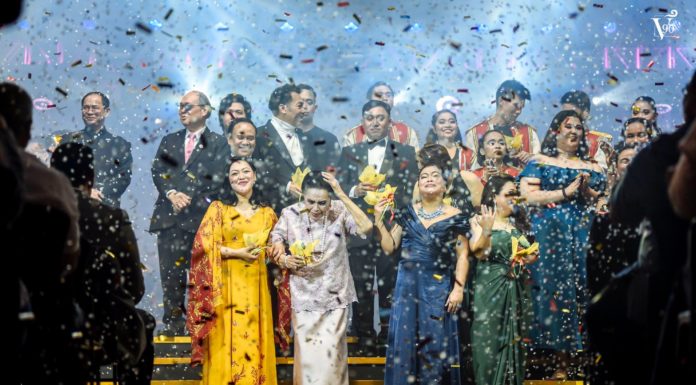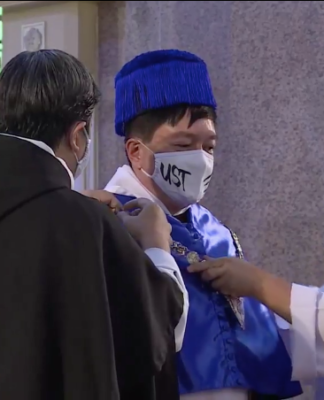ADVANCES in media technology have so enthralled today’s journalists to the extent that they have neglected the fundamentals of press practice, said Jullie Yap-Daza, one of the most popular and distinguished UST alumni in the media.
Delivering the fourth annual Jose Villa Panganiban (JVP) Professorial Chair for Journalism lecture last Jan. 22 at the Thomas Aquinas Research Complex, Daza tackled the topic, “The Challenges of a Multimedia Journalist,” and drew from her experience as the only Filipino journalist to have enjoyed equal success in both print and broadcast.
Daza said that the quality of thinking and writing of journalists today has declined in the face of rapid advances in media technologies.
“The greatest challenge to a multimedia journalist is the journalist himself,” she said.
“Without a reporter who knows what he’s writing about—one who is skilled with his words and goes after the facts to report them clearly and accurately— all the high-tech systems offered to him are worth garbage,” the former editor in chief of the Manila Standard said.
“Journalists do not just write the news; they also interpret it,” she added.
Daza stressed that journalists must also read more to gain fresh ideas for their stories. “The journalist must also research thoroughly, organize his thoughts, and write logically,” she said.
Before some 200 students from the Journalism and Legal Management programs and editors and staffers from various campus publications, the former Varsitarian associate editor challenged budding journalists to confront the realities of the press profession, such as threats to life, low salary and libel.
“There is no money in journalism,” Daza said. “Are you sure this is what you (students) want to do in life despite the danger and poor paycheck?”
Daza graduated suma cum laude from the old Faculty of Philosophy and Letters (now Faculty of Arts and Letters), with a Litt. B degree in Journalism in 1961.
Even while in college, she was already working as a sub-editor of the Evening News. She later became an editor of the pre-martial-law Daily Herald. She wrote the popular column, Medium Rare, and became editor in chief of popular magazines such as People, Oh! and Lifestyle Asia.
She is also a highly successful book author. Her best sellers include The Best of Medium Rare, The Love Stories of Julie Y. Daza, Manners for Moving Up, and the controversial Etiquette for Mistresses and What Wives Can Learn from Them, whose revised edition will be released soon.
On television, Daza has hosted several hit shows such as Tell the People, Tell the People Now, and Jullie!
Daza received the Catholic Mass Media Award for Best TV Public Affairs Talk Show and the Star Award for the Best TV Talk Show. She was also named Outstanding Journalist by the Rotary Club of Manila.
The JVP is a professorial chair lecture on media currents. It is endowed by the Varsitarian in honor of its founder, Jose Villa Panganiban. This year, the lecture was organized by the paper together with the UST Journalism Society.
Panganiban, who became an editor in chief and much later, faculty adviser of the paper, became a journalist, writer, linguist, radio commentator, and director of the Institute of National Language (now the Komisyon ng Wika). He died in 1972 but not before releasing his colossal work, the Diksyunaryo-Tesauro Ingles-Pilipino. During the lecture, Jose Lucilo Panganiban III, JVP’s grandson, represented the Panganiban family.















